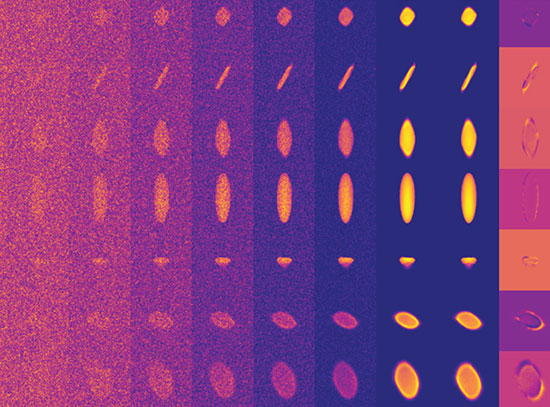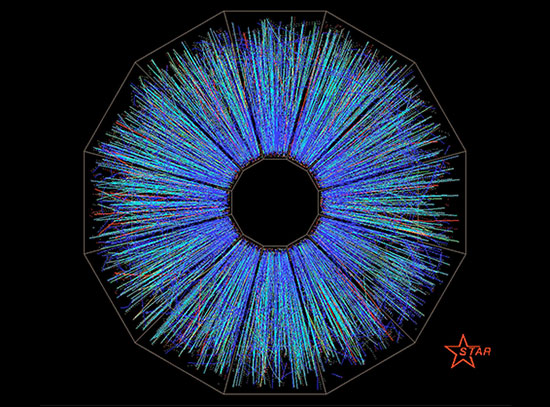Department of Energy and Regulators Reach Agreement on Final Groundwater Cleanup Decisions at Brookhaven Lab
May 17, 2005
The U.S. Department of Energy and Brookhaven Lab today issued the following news release. DOE contact: John Carter, 631/344-5195. BNL contact: Peter Genzer, 631/344-3174.
UPTON, NY - The U.S. Department of Energy (DOE), the U.S. Environmental Protection Agency (EPA), and the New York State Department of Environmental Conservation (NYSDEC) have agreed on final cleanup decisions for groundwater contamination in several areas at and near Brookhaven National Laboratory (BNL). The agreement, known as the Operable Unit III Explanation of Significant Differences (ESD), documents decisions on several actions that were not finalized in a June 2000 groundwater cleanup agreement.
Background
In June 2000, DOE, EPA, and NYSDEC agreed to a series of cleanup activities for contaminated groundwater at and near BNL. These decisions are described and documented in a Record of Decision (ROD). Three cleanup decisions, however, could not be finalized until additional actions were completed. These actions included:
- Characterize the Magothy Aquifer, an area of water-saturated sand beginning about 200 feet below ground and descending several hundred feet, and select an the appropriate cleanup plan.
- Evaluate the effectiveness of a groundwater treatment system to determine the effectiveness of cleaning up strontium-90 contamination. The results of this pilot study would be used to finalize cleanup approaches for two other areas of groundwater on the Lab site contaminated with strontium-90.
- Investigate buried debris near a building in the center of the Lab and determine if cleanup is needed.
Changes to the Record of Decision
Magothy Aquifer - The ROD stated that DOE, EPA, and NYSDEC would evaluate the need for a Magothy remedy after additional sampling and analysis activities were completed. These agencies and Suffolk County Department of Health Services agreed that a remedy to remove chemicals from the Magothy Aquifer is appropriate.
Features of the cleanup remedy for the Magothy Aquifer include:
- Continue operating the existing groundwater extraction wells (part of the Upper Glacial Aquifer treatment systems) to capture Magothy contamination.
- Operate the system for approximately 10 years and allow for natural attenuation for an additional 55 years. Drinking-water standards would ultimately be met in about 65 years.
- Install two additional off-site Magothy extraction wells to capture high concentrations of chemicals and prevent additional contamination from entering the Magothy Aquifer. This work was completed last summer.
- Continue monitoring and data evaluation to ensure effectiveness of the cleanup approach.
- Maintain institutional controls over the groundwater areas and conduct five-year reviews of the cleanup action to assure effectiveness.
Strontium-90 - The original investigation identified two strontium-90 plumes (areas of groundwater contamination) — one near the Brookhaven Graphite Research Reactor at the center of the BNL site and the other near a former waste disposal area in the south-central portion of the site. Strontium-90 contamination is not impacting on-site drinking water wells and contamination has not been detected in areas off the BNL site.
The ROD required a pilot study to evaluate the effectiveness of an extraction well and ion-exchange process for cleaning up strontium-90. The study demonstrated that strontium-90 could be successfully removed from the groundwater. However, when water flows through the filters too quickly, the filters capture and hold minerals and other natural impurities in addition to the strontium-90, reducing filter life. The final cleanup action for the strontium-90 plumes described in the ESD adjusts for this inefficiency by reducing the rate at which groundwater is treated, thereby extending filter life.
Features of the cleanup remedy for the strontium-90 plumes include:
- Retain the same cleanup goal for strontium-90 in the groundwater.
- Continue active treatment (pump-and-treat) but at a more efficient flow rate.
- Allow up to 70 years, instead of 30 years, for cleanup to be completed.
- Limit the "footprint" of contamination.
- Ensure contamination will not cross the site boundary to off-site areas.
- Continue monitoring and data evaluation to ensure effectiveness of the cleanup approach.
- Maintain institutional controls over the groundwater areas and conduct five-year reviews of the cleanup action to assure effectiveness.
Building 96 - Decades ago, the area south of Building 96 (at the center of BNL) was used as a scrap yard and to store 55-gallon drums. Because this area was a potential source of chemical contamination, surveys using instruments similar to metal detectors were performed in 1999 to identify and locate buried waste containers. Exploratory excavations were performed in 2004. No debris or contamination was found. No further action in this area is needed.
The DOE, EPA, and NYSDEC agree that none of these changes fundamentally alter the remedy selected in the ROD. These remedies remain protective of human health and the environment, and comply with federal and state requirements identified in the ROD.
Community Input
The agreement was reached following extensive regulator and public review of the draft ESD, including a voluntary 30-day public comment period and several community meetings. The ESD contains a Responsiveness Summary, which documents public comments on the proposed remedial actions and DOE responses to those comments.
Concerns raised by the community primarily focused on the length of time proposed for the strontium-90 and Magothy remediation. After reviewing and considering these comments, DOE, USEPA, and NYSDEC agreed that the proposed strontium-90 and Magothy cleanup plans are protective of human health and the environment and should not be changed at this time. The ESD was modified to include language, suggested by the community, specifying that DOE should continue to look for more effective and efficient cleanup technologies, and should keep the community informed about cleanup progress through ongoing and five-year reviews.
The ESD is available for review on the web, and at the Mastics-Moriches-Shirley Community Library in Shirley, BNL Research Library in Upton, and the EPA - Region 2 Library in Manhattan.
Environmental remediation at Brookhaven Lab is carried out under requirements of the Comprehensive Environmental Response, Compensation and Liability Act of 1980. Past operations at the laboratory resulted in soil and groundwater contamination. Remediation work is conducted under the framework of an interagency agreement among the U.S. Department of Energy, the U.S. Environmental Protection Agency and N.Y. State Department of Environmental Conservation. The Department of Energy owns the Brookhaven property and oversees and funds the cleanup program.
2005-10322 | INT/EXT | Newsroom









